St. Patrick's Roman Catholic Church
619 10th St. NW
Washington, DC
Images
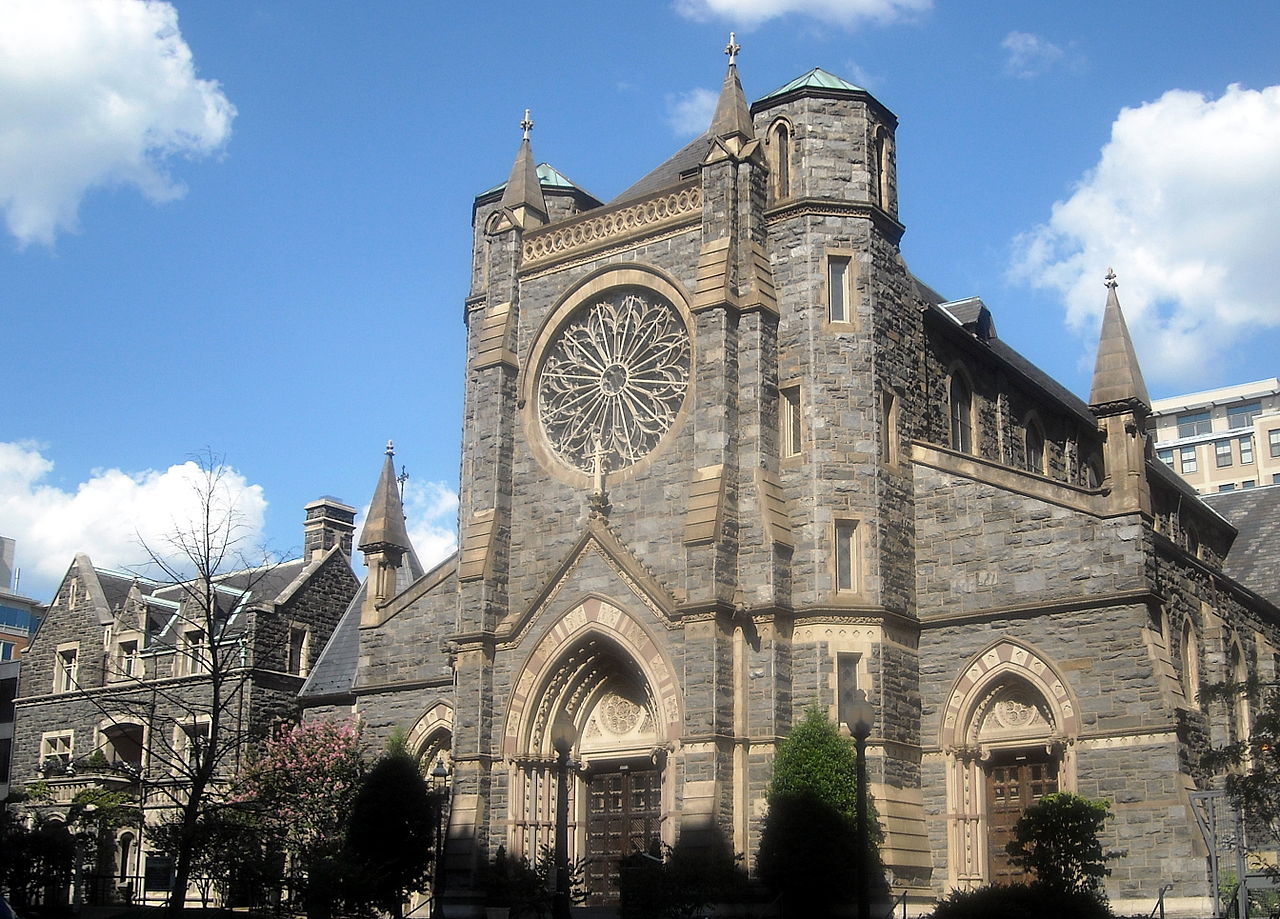 2008-08-03 - Church exterior (Photograph by Wikipedia, submitted by Jeff Scofield/Jeff Scofield)
2008-08-03 - Church exterior (Photograph by Wikipedia, submitted by Jeff Scofield/Jeff Scofield)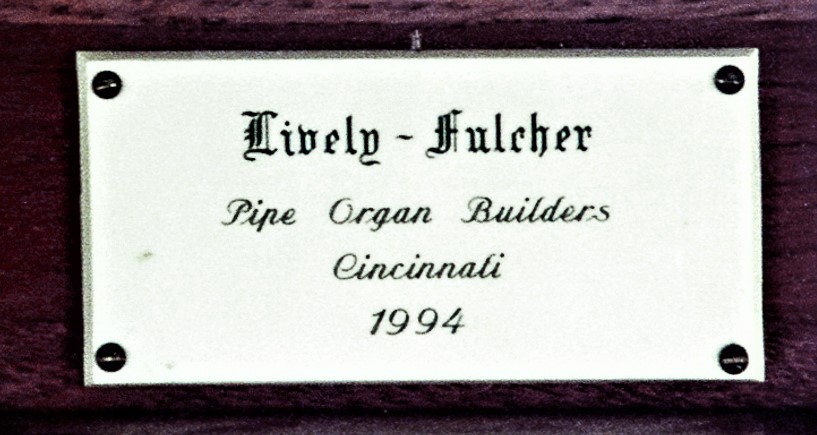 2010-07-11 - Builder nameplate (Photograph by Ken Stein, photographybystein.com, submitted by Jeff Scofield/Jeff Scofield)
2010-07-11 - Builder nameplate (Photograph by Ken Stein, photographybystein.com, submitted by Jeff Scofield/Jeff Scofield)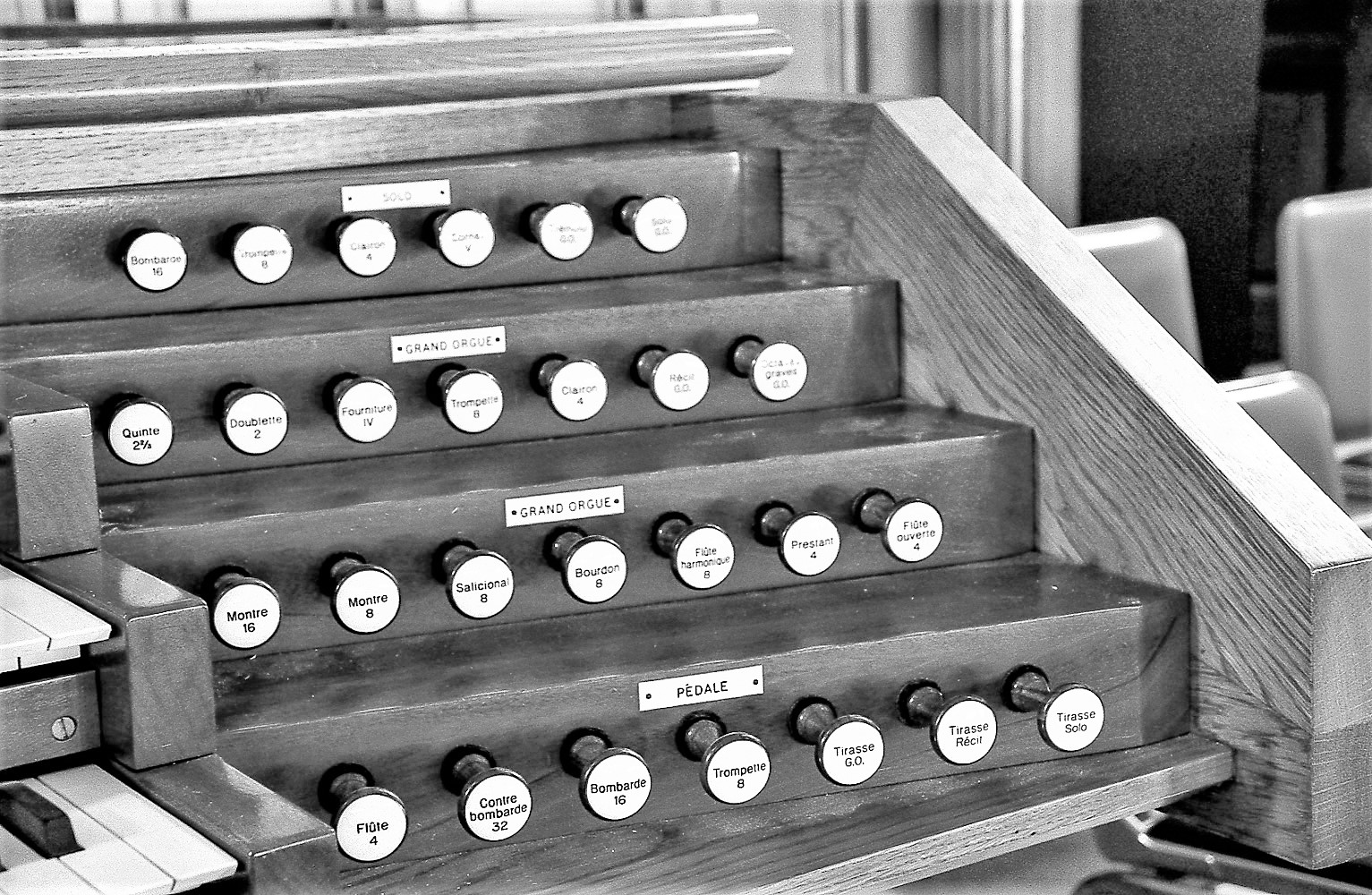 2010-07-11 - Right stopjamb (Photograph by Ken Stein, photographybystein.com, submitted by Jeff Scofield/Jeff Scofield)
2010-07-11 - Right stopjamb (Photograph by Ken Stein, photographybystein.com, submitted by Jeff Scofield/Jeff Scofield)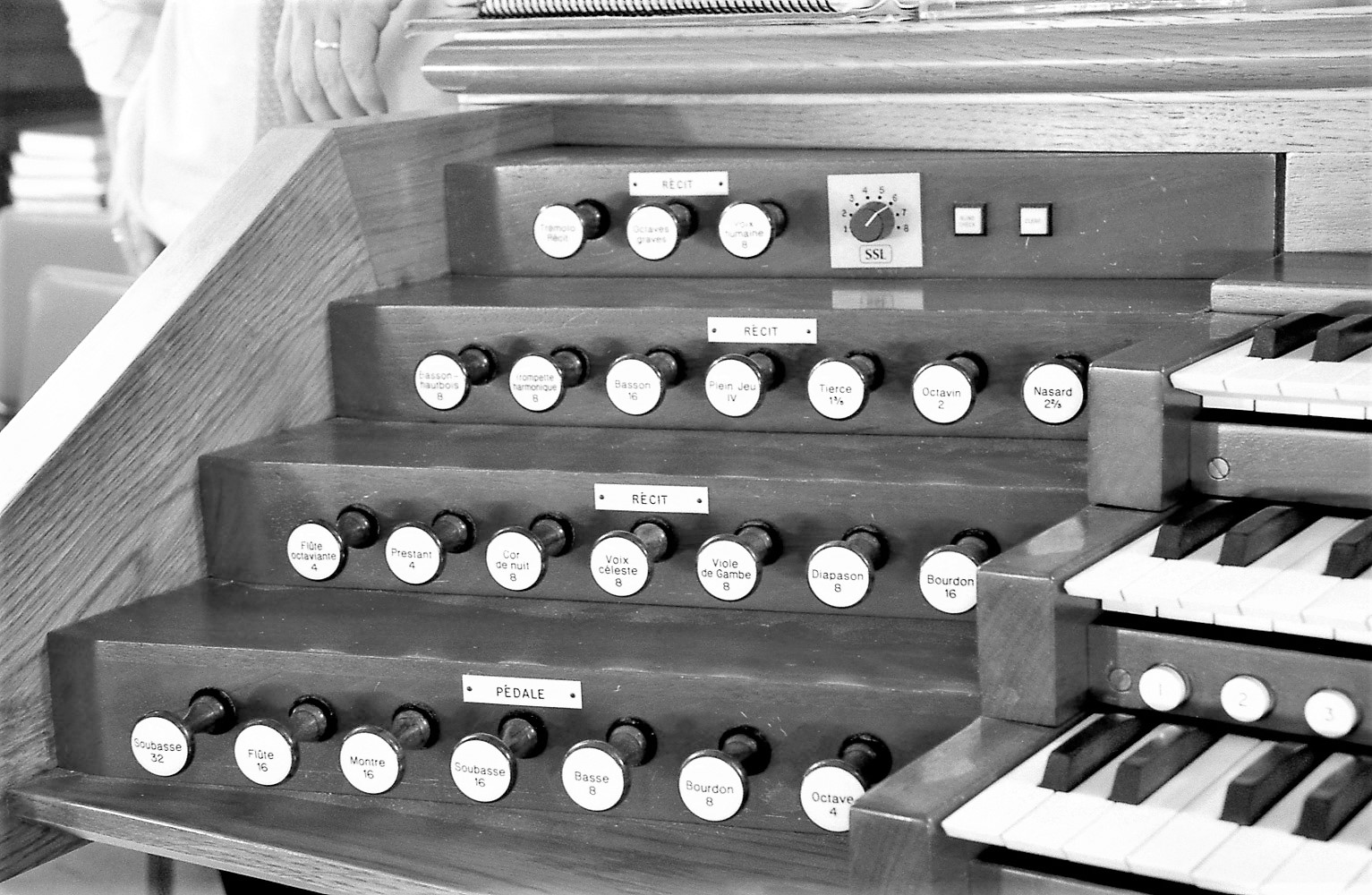 2010-07-11 - Left stopjamb (Photograph by Ken Stein, photographybystein.com, submitted by Jeff Scofield/Jeff Scofield)
2010-07-11 - Left stopjamb (Photograph by Ken Stein, photographybystein.com, submitted by Jeff Scofield/Jeff Scofield)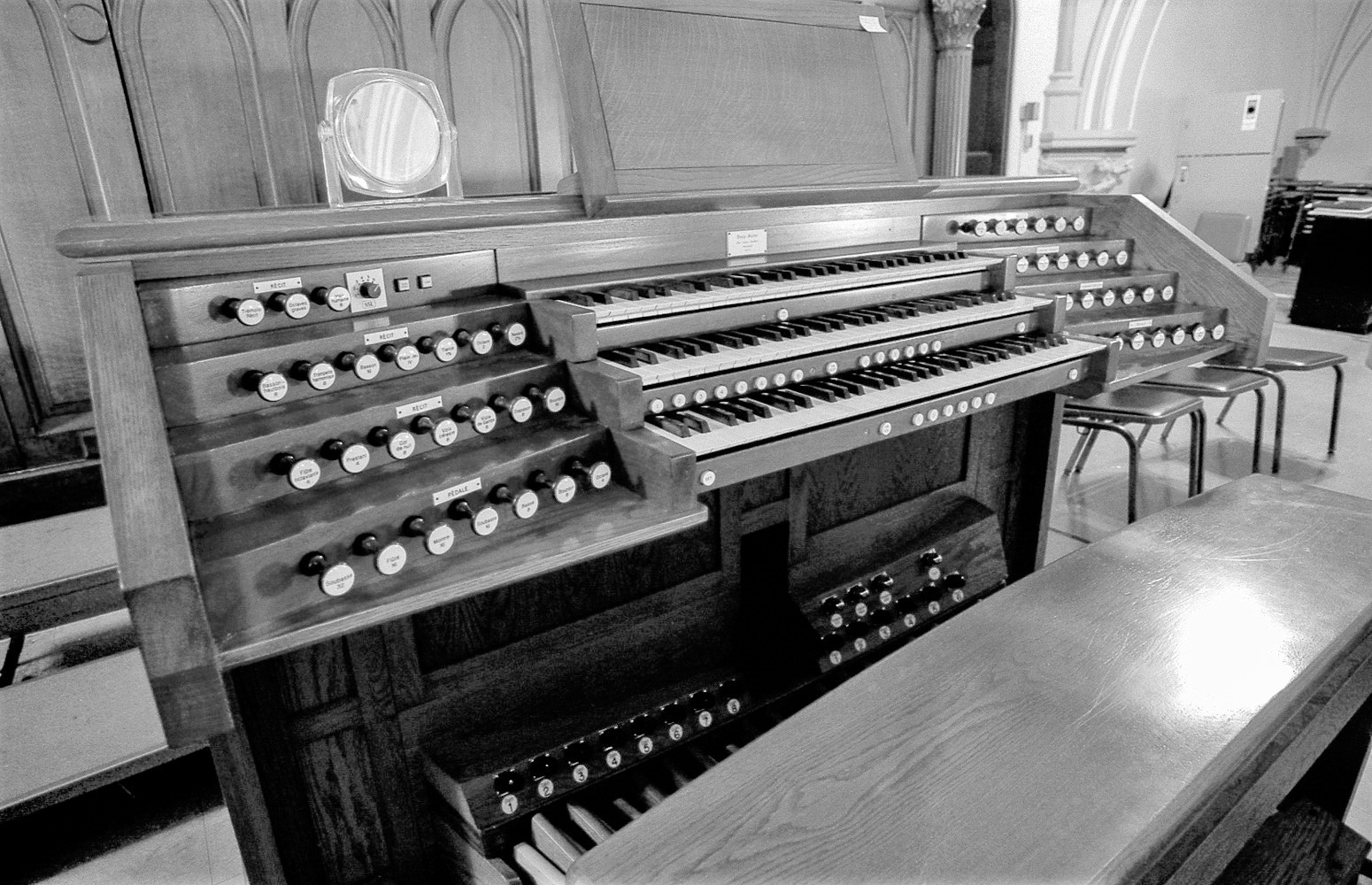 2010-07-11 - Console (Photograph by Ken Stein, photographybystein.com, submitted by Jeff Scofield/Jeff Scofield)
2010-07-11 - Console (Photograph by Ken Stein, photographybystein.com, submitted by Jeff Scofield/Jeff Scofield)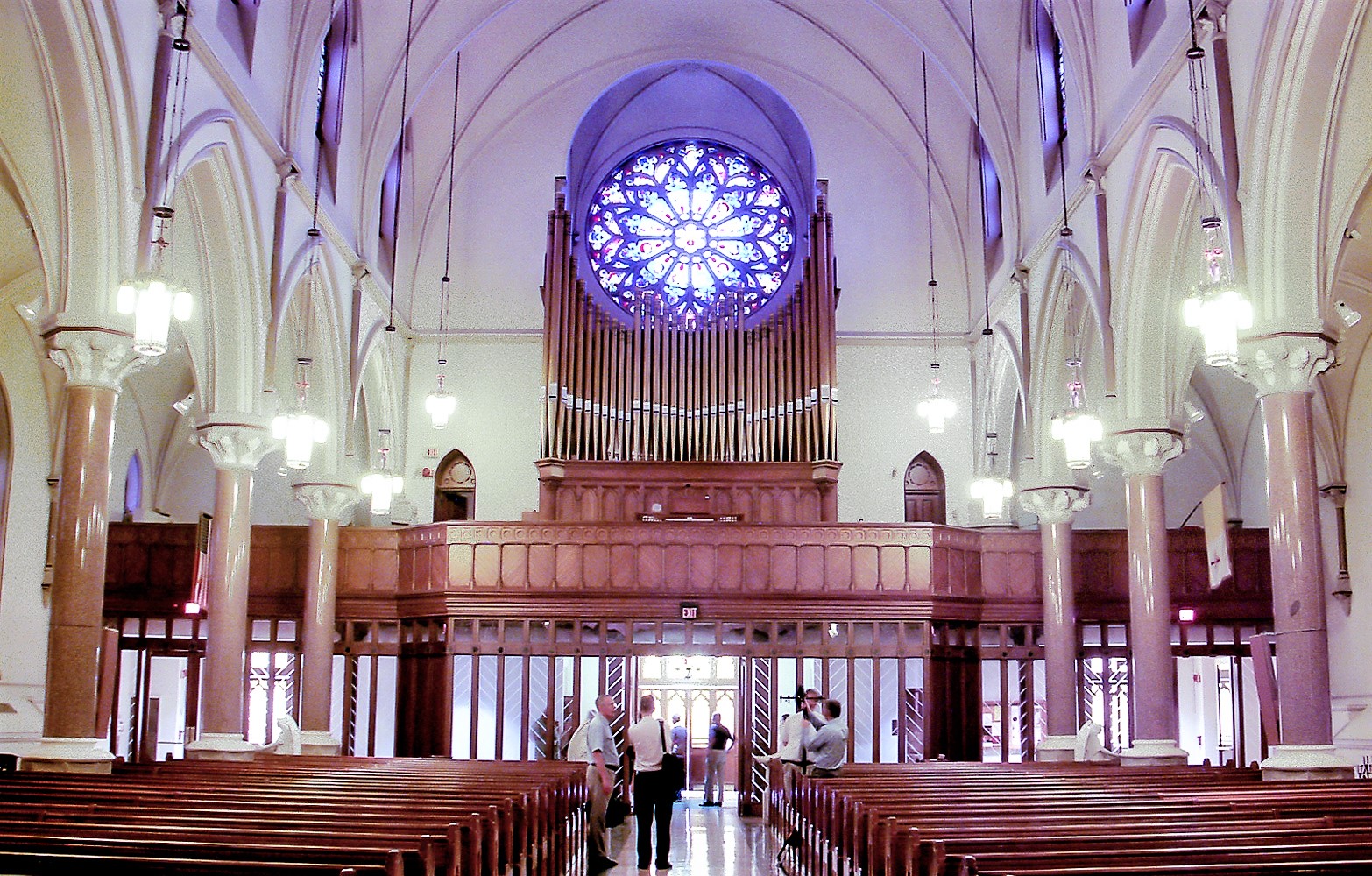 2010-07-11 - Church interior to gallery and organ (Photograph by Ken Stein, photographybystein.com, submitted by Jeff Scofield/Jeff Scofield)
2010-07-11 - Church interior to gallery and organ (Photograph by Ken Stein, photographybystein.com, submitted by Jeff Scofield/Jeff Scofield)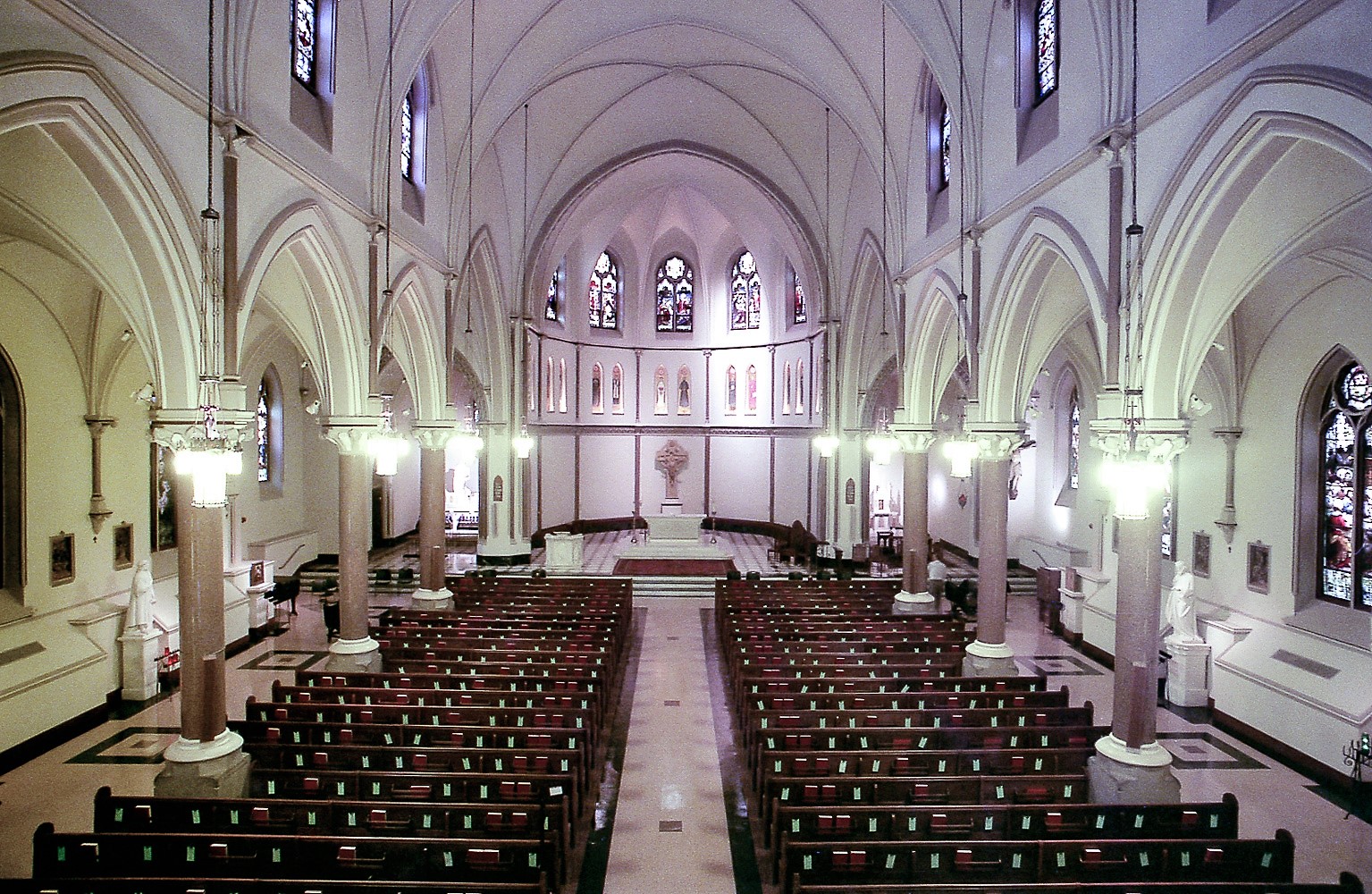 2010-07-11 - Church interior (Photograph by Ken Stein, photographybystein.com, submitted by Jeff Scofield/Jeff Scofield)
2010-07-11 - Church interior (Photograph by Ken Stein, photographybystein.com, submitted by Jeff Scofield/Jeff Scofield)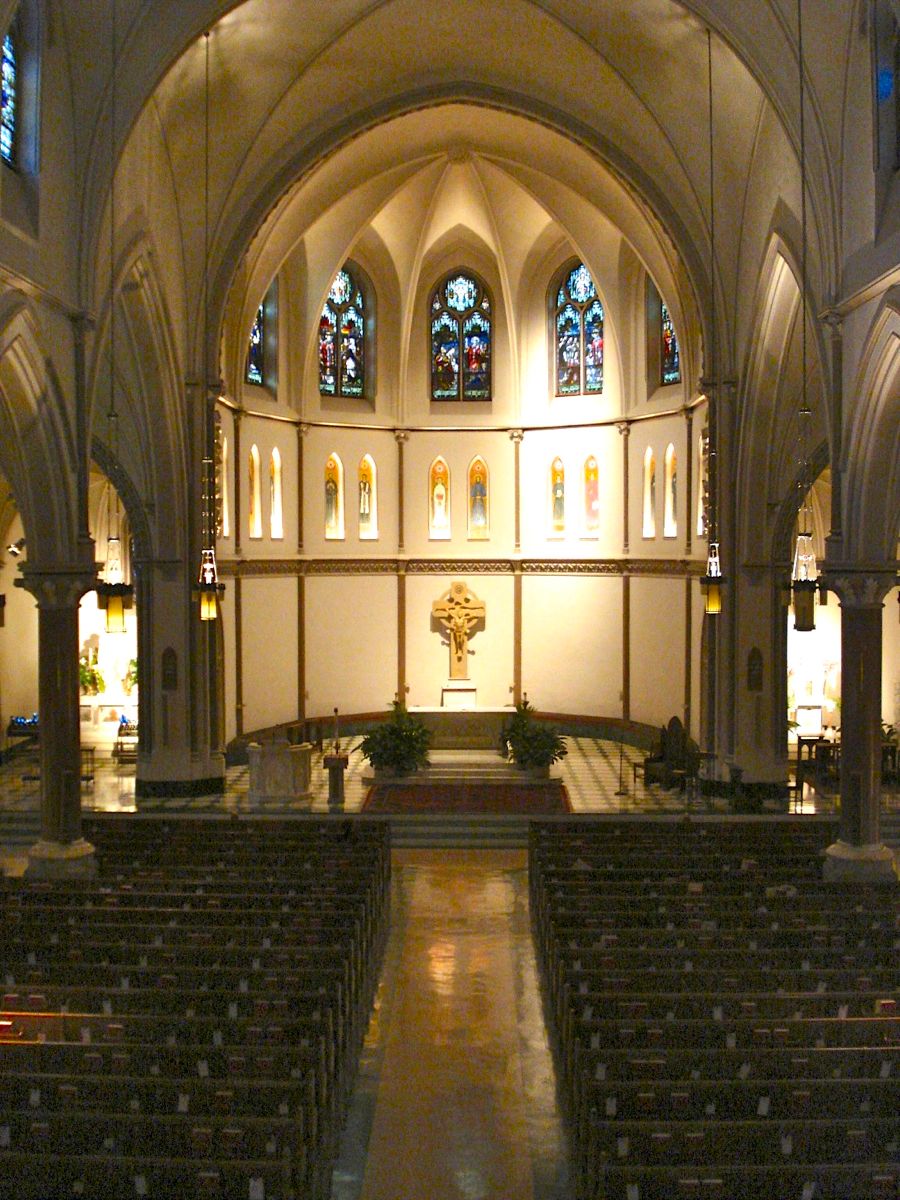 2012-11-19 - Church Interior and Altar (Photograph by Bryan Dunnewald/Database Manager)
2012-11-19 - Church Interior and Altar (Photograph by Bryan Dunnewald/Database Manager)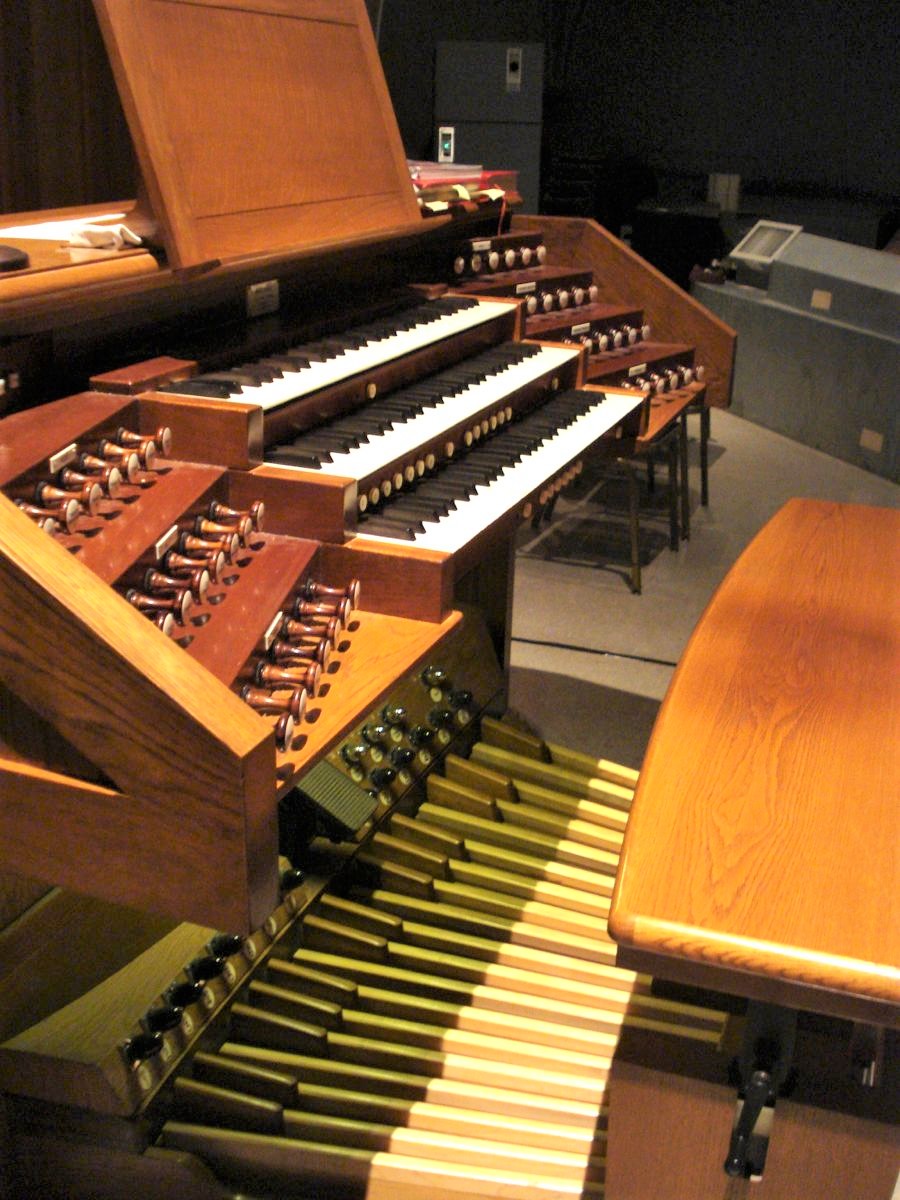 2012-11-19 - Console (Photograph by Bryan Dunnewald/Database Manager)
2012-11-19 - Console (Photograph by Bryan Dunnewald/Database Manager)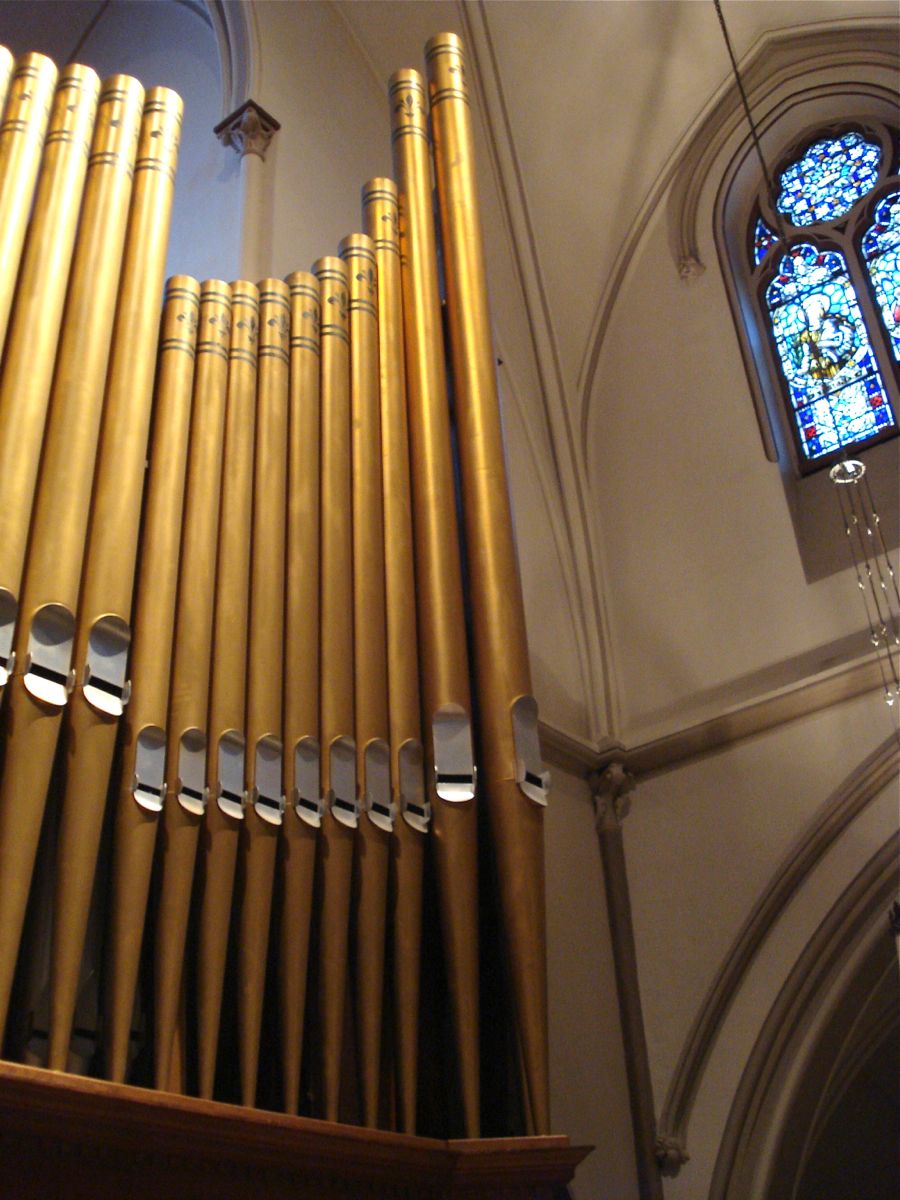 2012-11-19 - Pipe Facade (Photograph by Bryan Dunnewald/Database Manager)
2012-11-19 - Pipe Facade (Photograph by Bryan Dunnewald/Database Manager)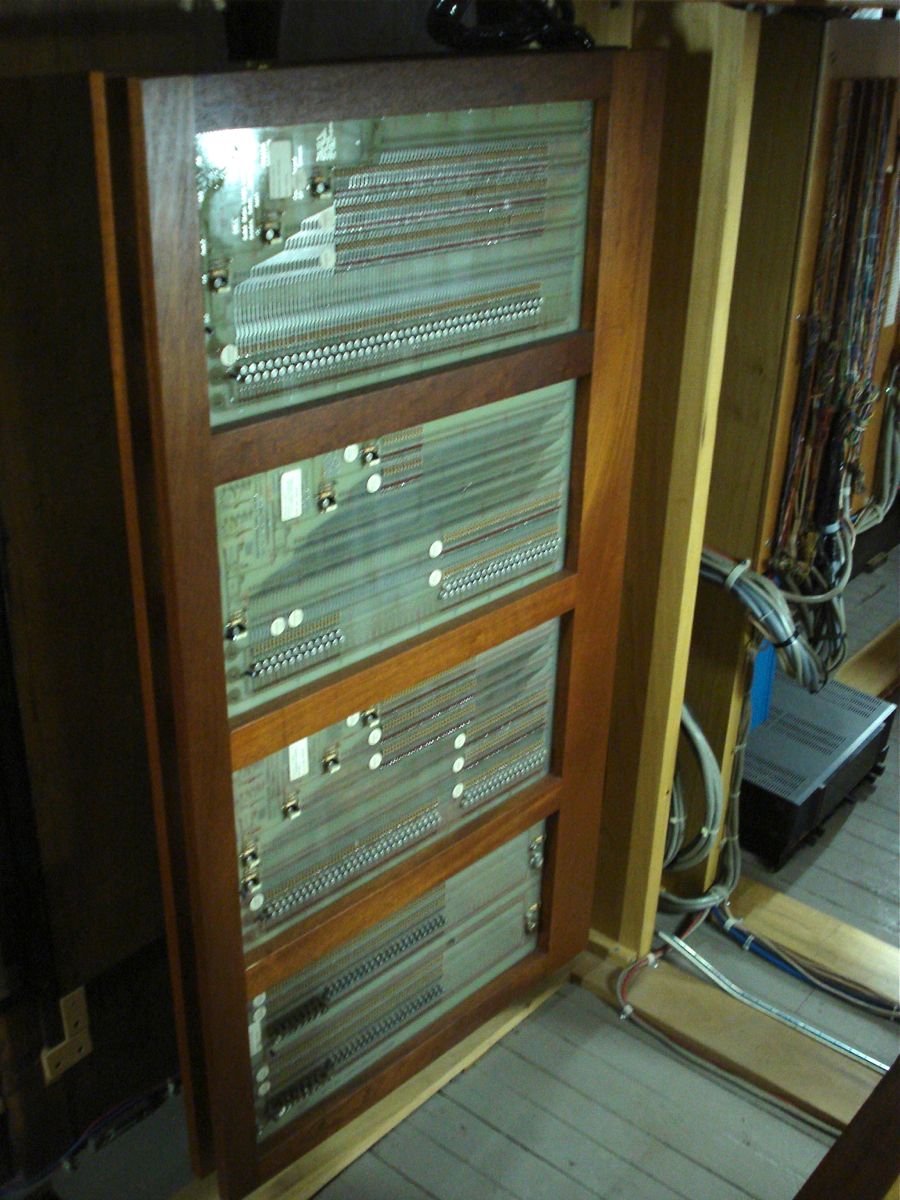 2012-11-19 - Relays (Photograph by Bryan Dunnewald/Database Manager)
2012-11-19 - Relays (Photograph by Bryan Dunnewald/Database Manager)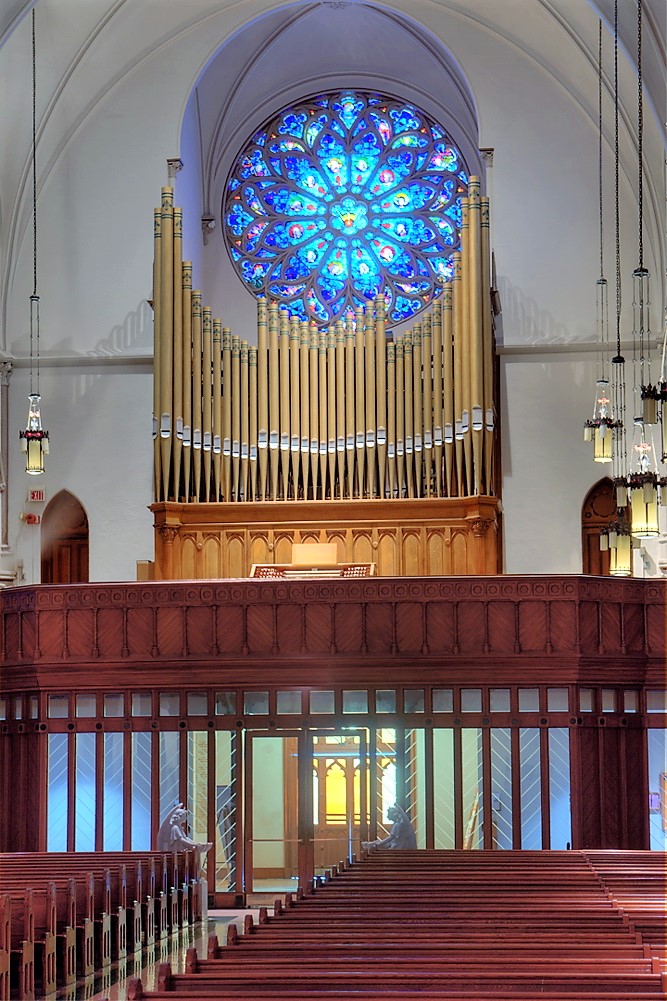 2010-11-15 - Nave, Gallery, and Pipe Facade (Photograph by Len Levasseur/Database Manager)
2010-11-15 - Nave, Gallery, and Pipe Facade (Photograph by Len Levasseur/Database Manager)
Consoles
Main
- Organ type: Traditional Without Cover
- Console position: Movable Console
- 3 manuals
- 42 stops
- 4 divisions
- Key action Type: Electrical
- Stop action Type: Electrical
- Stop layout Type: Drawknobs in Horizontal Rows on Terraced/Stepped Jambs
- Manual compass: 61 notes
- Pedal compass: 32 notes
- Pedal Type: Concave Radiating (Meeting AGO Standards)
- Expression Type: Balanced Expression Shoes/Pedals (Meeting AGO Standards)
- Combination action: Adjustable Combination Pistons
- Has combination thumb pistons
- Has coupler toe pistons
- Has tutti thumb pistons
- Has tutti toe pistons
Notes
2004-10-30 - Status Note: There 1998 -Database Manager
2004-10-30 - Retains some pipework from previous Möller organ. Rear gallery. -Database Manager
2005-07-24 - On-line update from Joe O'Donnell -- This is a Catholic church, not Episcopal -Database Manager
2007-10-16 - Updated through online information from Paul Fulcher. -Database Manager
2009-02-28 - Updated through online information from Jeff Scofield. -- Original organ 1895 Barkhoff rebuilt and enlarged by someone in 1932; Möller added a new 4-manual console (doing no other work) as Op. M-6360 in 1951. -Database Manager
2011-02-16 - Updated through online information from Connor Annable. -Database Manager
Stoplist
Typed stoplist from the OHS PC Database. Source: Source not recorded Date not recorded
St. Patrick's, Washington, DC
1994 Lively-Fulcher
(Stoplist; PIPORG-L, Neill Callis, Dec 1998)
Manual I: Grand Orgue
Montre 16'
Montre 8'
Bourdon 8'
Salicional 8'
Flute harmonique 8'
Prestant 4'
Flute ouverte 4'
Quinte 2 2/3'
Doublette 2'
Fourniture IV
Trompette 8'
Clairon 4'
Manual II: Recit Expressif
Bourdon 16'
Diapason 8'
Viole de Gambe 8'
Voix Celeste 8'
Cor di nuit 8'
Prestant 4'
Flute octaviante 4'
Nasard 2 2/3'
Octavin 2'
Tierce 1 3/5'
Plein Jeu IV
Basson 16'
Trompette harmonique 8'
Basson-hautbois 8'
Voix humaine 8'
Manual III: Solo
Cornet (tenor g) V
Bombarde 16'
Trompette 8'
Clairon 4'
Pedale
Soubasse 32' (lowest 12 notes electronic...ICMI I believe)
Flute 16'
Soubasse 16'
Montre 16' (G.O.)
Basse 8'
Bourdon 8'
Octave 4'
Flute 4'
Contrebombarde 32'
Bombarde 16'
Trompette 8'
Tremolo G.O.
Tremolo Recit
Recit-G.O.
Solo-G.O.
Octaves graves G.O.
Ocatves graves Recit
Tirasse G.O.
Tirasse Recit
Tirasse Solo
The building was renovated at the time of the organ installation: a new
coat of laquer? paint was applied to the interior walls, and a new floor
(marble?) was laid. According to Mark Lively (organbuilder), the
acoustic was 2-3 seconds before the renovation...now it's like 6-8
seconds!
The organ was installed in 1994 by the firm Lively-Fulcher of
Alexandria, VA, in the rear Gallery; I believe it retains some pipework
from the previous instrument (Hook and Hastings?) but I can't confirm
those details presently. The Grand Orgue and Recit are 'straight' --
that is to say, each stop is independant. The Solo reeds are a single
rank. The Pedale Soubasse is a 32-16-8 unit; the 4' Flute is
independant. The Pedale "Flute" (i.e., Principal) and Basse (i.e.,
Octave) are straight; the 4' Octave is an extension of the 8' Basse.
The Pedal reeds are a single rank. And the 32' Contrebombarde is
real.....oh boy is it real.
Key action and combination is electric/solid-state; console is a
detached, Cavalle-Coll type layout (all couplers are on drawknobs
grouped with the stops). The toe-studs are actually large toe-buttons.
The organ is more versatile than the stoplist would lead one to believe;
the manual Principal choruses are strong, clean, and resplendant; they
seem less French and more English. (This isn't a surprise since both
Paul Fulcher and Mark Lively previously worked for Walker and Sons, of
England.) The Recit swell-box is capable of damping the fully-drawn
Recit to a near-whisper! Both 4' manual flutes are real treasures; the
G. O. reeds give a fine account of themselves; remind me much of the
Langlais recordings of Ste. Clotilde.
What is interesting, however, is that the Solo reeds, while not able to
stand out above full organ in single notes on their own, provide the
tutti with such a shatteringly loud crown that one can hardly believe it
the first time you hear it. It's equally powerful in the sanctuary,
although the room is not bass-friendly; (the ceiling is suspended) at
the console the Contrebombarde is BIG.... but sounds just moderate from
the sanctuary.
Websites
Related Pipe Organ Database Entries
Other Links
Regrettably, it is not possible to display the information about the sponsor of this pipeorgandatabase entry or if there is a sponsor. Please see About Sponsors on Pipe Organ Database.











